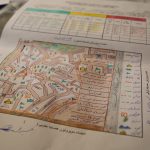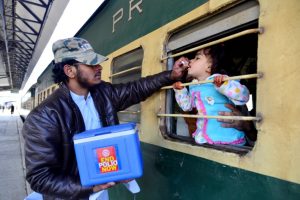
© GPEI
Fast Facts
Population: 161.3M (2018)
- Polio Status: Polio-free (as of 2014)
- Polio added to the vaccine schedule: 1979 (OPV), IPV (2015) [note: fractional dose IPV from 2017 on]
- OPV3 Coverage: 98% (2018)
- IPV Coverage: 75% (2018)
Timeline
1985
Government of Bangladesh establishes the Global Universal Child Immunization Initiative (UCI) to intensify Expanded Programme on Immunization (EPI) efforts.
1988
The World Health Assembly passes a resolution to eradicate polio by the year 2000, launching the Global Polio Eradication Initiative.
1995
The first NIDs are conducted on March 16 and April 16; the National Polio Laboratory is established. In the subsequent year, Acute Flaccid Paralysis (AFP) case reporting begins.
1999
The number of clinically confirmed polio cases decreases by 87% between 1994 and 1999.
2000
The last case of wild poliovirus (WPV) transmission is recorded in August.
2015
In response to the confirmed cases in Myanmar, Bangladesh conducts ‘Mop Up’ vaccination campaigns with trivalent oral polio vaccine (tOPV).
2016
As part of the global switch, Bangladesh switches from trivalent to bivalent OPV and introduces Inactived Poliovirus (IPV). IPV supply challenges persist in 2016, and in 2017 fractional IPV is introduced.
2018
The final draft polio transition plan was discussed in the inter-agency coordination committee meeting chaired by the Secretary of Health Service Division on 14 May and the draft was approved by the ICC.
Country Data
Bangladesh was certified as polio-free by the Global Polio Eradication Initiative (GPEI) in 2014 along with the rest of the countries in the World Health Organization Southeast Asian Region (WHO-SEARO). After launching the polio eradication program in 1995, indigenous wild poliovirus (WPV) was interrupted in Bangladesh in the year 2000. Bangladesh experienced its last outbreak of imported WPV from India in 2006 resulting in 18 cases and has since remained free from any WPV cases.
The Bangladesh government stewarded the polio eradication activities operationalized through the Expanded Program on Immunization (EPI). the Interagency Coordination Committee on Immunization (ICC), established in 2000 and chaired by the Ministry of Health and Family Welfare (MoHFW) with representation from partner agencies, endowed additional oversight. Several other governing bodies have been formed to serve specific tasks as the various initiatives have evolved over time. The National Certification Committee for Polio Eradication (NCCPE), the National Expert Review Committee (ERC), are responsible for reviewing acute flaccid paralysis (AFP) cases and monitoring the certification process. the National Steering Committee for Polio Eradication and Measles Control (NSC-PE&MC), which has been mandated to coordinate any emergency response should a case of WPV or cVDPV be detected in Bangladesh. The Program Management and Monitoring Unit (PMMU) within the MoHFW, is responsible for coordinating the polio transition plan. Bangladesh stopped receiving GPEI funding as of 2019, and Gavi financing will also cease in 2022 when the country is expected to graduate from a low-middle income country to a middle-income country.
Organization Description
The BRAC James P. Grant School of Public Health (BRAC JPGSPH), BRAC University, is a leading global public health institute in Dhaka, Bangladesh. The School was established in 2004 to address the unmet public health challenges of the developing world. The School partners with BRAC (the world’s largest NGO, reaching over 100 million people in Bangladesh and working in 9 countries in Africa and Asia) and icddr,b (a leading international health research institute, which fosters innovation in the development and delivery of global life-saving solutions).
The School draws from Bangladesh’s remarkable public health achievements and BRAC’s national and international experience in delivering sustainable primary health interventions to the most marginalized communities. BRAC JPGSPH applies an interdisciplinary integration of education, training, and research including, advocacy for universal health coverage with equity, maternal and reproductive health, nutrition, gender equity, WASH, non-communicable diseases, urbanization and the impact of climate change on health.
Page updated on: 30/08/2020
Key Documents
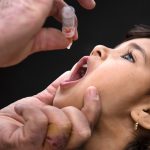
What can over 30 years of efforts to eradicate polio teach us about global health?
View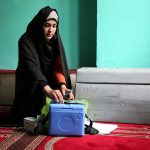
Synthesis and translation of research and innovations from polio eradication (STRIPE): initial findings from a global mixed methods study
View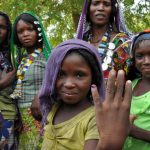
Evaluating the process of partnership and research in global health: reflections from the STRIPE project
View